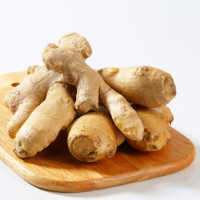The general term used to describe joint pain or joint disease is arthritis. There are more than 100 different types of arthritis and it is one of the leading causes of disability worldwide. It can affect people of all ages, not only the elderly.
What are the common symptoms?
Swelling, pain, joint stiffness and a decreased range of motion, and the intensity can vary from mild to severe.
What are the most common types of arthritis?
Osteoarthritis (OA): This is a degenerative form of arthritis and is also the most common. It occurs when cartilage wears away and bone rubs against bone, causing pain, swelling and stiffness.
Rheumatoid arthritis (RA): This is an inflammatory, autoimmune disorder where the immune system overreacts and attacks the body, in this case the joints. It is believed that a combination of susceptible genetics and environmental triggers (like smoking) can trigger the auto-immune response. With RA, early diagnosis and aggressive treatment is vital because the slower the disease progresses the less damage is caused.
Gout: When purines from protein foods are broken down by the body, uric acid is formed. In the case of gout, people naturally produce excessive amounts of uric acid and /or the body is unable to clear the excess uric acid fast enough. When the uric acid gets too much, tiny needle-like crystals can form in the joint, causing extreme pain referred to as a gout attack. If uric acid levels are not reduced, the gout can become chronic.
How nutrition can help
OA:
- Losing >5% of your body weight can result in a modest improvement in pain and function, but unfortunately does not slow disease progression.
- Eat more dark green and orange vegetables and orange fruits. Sufficient amounts of antioxidants can help to combat inflammation.
- Avoid foods high in sugar and made from white refined flour as these aggravate inflammation.
- Follow a Mediterranean type diet. This involves including more mono-unsaturated fats (like olives and avo) into your diet, increasing your wholegrain, legumes, fruit, vegetable and seafood intake, decreasing your meat and meat product intake and including moderate amounts of low fat dairy.
- Slow and sustainable weight loss (if overweight).
- Avoid fast weight loss on a high animal protein diet (rapid weight loss and high dietary animal purines can aggravated serum uric acid levels).
- Limit your intake of high purine-containing meat and seafood.
- High purine vegetables need not be limited.
- Decrease your intake of sugar-sweetened beverages and foods.
- Decrease your intake of alcoholic beverages, especially beer.
- Consult your doctor and dietitian abut which foods are high in purines and what other dietary measures you can take to assist with your gout attacks.
OA:
- Antioxidant supplements have not been shown to be beneficial, therefore it is better to focus on your diet
- Glucosamine Sulphate and ASU (Avocado Soy Unsaponifiables) may improve symptoms of OA.
- Herbal products that show promise include devil's claw (Harpagophytum procumbens), rose hip and seed powder, and the Chinese herbal mixture SKI306X.
- Methylsulfonylmethane (MSM) may improve pain when compared to a placebo, but further studies are needed before any recommendations can be made.
- Remission can be achieved through medications known as anti-rheumatic drugs (prescribed by a doctor).
- If taking Methotrexate (MTX), ask your doctor about folic-acid (1mg/day) supplementation which can reduce the adverse effects of MTX, especially liver toxicity.
- If you are receiving glucocorticoids, it is vital that you consume adequate calcium (1200-1500mg/day from your diet and supplements) as well as the active form of vitamin D3.
- High dose omega 3 fatty acid supplements may also have a beneficial effect on some RA symptoms. However, more studies are warranted before a specific dose can be recommended.
- If you suffer from anaemia, chat to your doctor about how to effectively treat this condition.
Gout:
- Vitamin C doses of 500mg/day appear to be well tolerated and assist with excretion of uric acid. Consult your doctor or dietitian about optimal levels of vitamin C.




